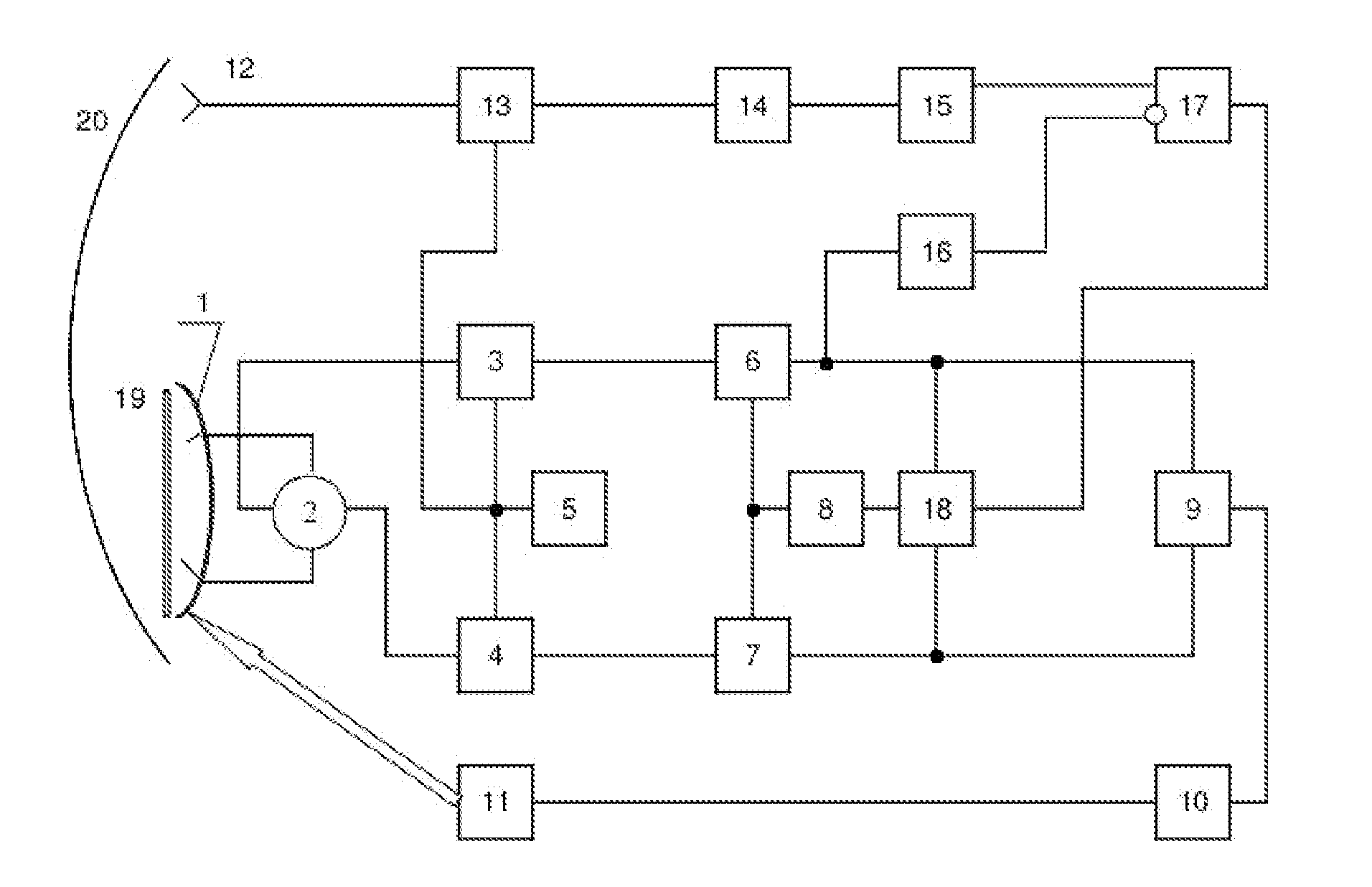Method of automatic target angle tracking by sum-and-difference monopulse radar and device therefore
- Summary
- Abstract
- Description
- Claims
- Application Information
AI Technical Summary
Benefits of technology
Problems solved by technology
Method used
Image
Examples
example 1
[0073]The radio direction-finder (FIG. 1) comprises monopulse antenna (for example, a paraboloid of revolution with two-mode feed) in the mouth of which a polarization filter 19 is mounted. The working polarization for antenna 1 is a vertical one. The outputs of antenna 1 are connected to the sum-and-difference device in the form of stripline ring 2, the sum output of which is connected to mixer 3 and the difference output—to mixer 4. Mixers 3 and 4 are also connected to heterodyne 5 which is also connected to mixer 13. The signal input of mixer 13 is connected to horn antenna 12 having the horizontal working polarization (orthogonal relative to the working polarization of monopulse antenna 1) and aperture (mouth) area 0.5 . . . 1.2λ2, which is mounted on the edge of antenna 1. The outputs of mixers 3 and 4 are connected respectively to the inputs of intermediate-frequency amplifiers 6 and 7, the outputs of which are connected to the appropriate inputs of phase detector 9, the outpu...
example 2
[0109]The radio direction-finder (FIG. 12) includes monopulse antenna (for example, a paraboloid of revolution with two-mode feed) in the mouth of which polarization filter 19 is mounted. The working polarization for antenna 1 is a vertical one. The outputs of antenna 1 are connected to the sum-and-difference device in the form of stripline ring 2, the sum output of which is connected to mixer 3 and the difference output—to mixer 4. Mixers 3 and 4 are also connected to heterodyne 5 which is also connected to mixer 13. The signal input of mixer 13 is connected to horn antenna 12 having the horizontal working polarization (orthogonal relative to the working polarization of monopulse antenna 1) and aperture (mouth) area 0.5 . . . 1.2λ2, which is mounted on the edge of antenna 1. The outputs of mixers 3 and 4 are connected respectively to the inputs of intermediate-frequency amplifiers 6 and 7. The output of intermediate-frequency amplifier 6 is connected to the input of automatic gain ...
PUM
 Login to View More
Login to View More Abstract
Description
Claims
Application Information
 Login to View More
Login to View More - R&D
- Intellectual Property
- Life Sciences
- Materials
- Tech Scout
- Unparalleled Data Quality
- Higher Quality Content
- 60% Fewer Hallucinations
Browse by: Latest US Patents, China's latest patents, Technical Efficacy Thesaurus, Application Domain, Technology Topic, Popular Technical Reports.
© 2025 PatSnap. All rights reserved.Legal|Privacy policy|Modern Slavery Act Transparency Statement|Sitemap|About US| Contact US: help@patsnap.com



